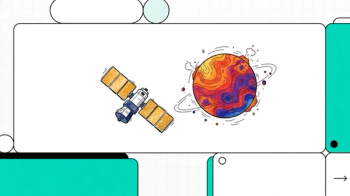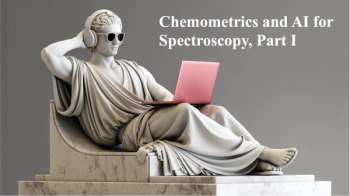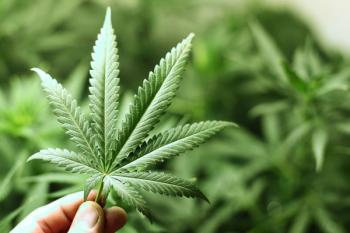Key Points
- Researchers developed a method combining NIR-HSI and machine learning to better detect colored and colorless microplastics.
- The two-stage PLS-DA model achieved over 99% accuracy, even under complex environmental backgrounds.
- The approach improves real-world plastic pollution analysis, though further refinement is needed for surface and additive effects.
A recent study examined a new method for improving the management of plastic pollution. This study, which was published in the Journal of Environmental Sciences, demonstrated how this new method, which combined near-infrared (NIR) hyperspectral imaging (HSI) with advanced machine learning (ML) algorithms, can solve an ongoing challenge in microplastic identification and research, and that is undercounting colorless plastic fragments.
Why is Studying Microplastics Important?
Microplastics are a growing environmental concern. Numerous studies have been looking at different ways to improve quantifying and classifying microplastics in the environment to advise public policy and mitigation efforts (2,3). Part of this research involves understanding how microplastics migrate in the environment via the air, ground, or water (4). The main issue with this research is that microplastics could be colorless, and as a result, they blend into the environment as background matter.
What Was The Researchers Proposed Method?
In this study, the research team, which was led by Hua Zhang from Tongji University and the Shanghai Institute of Pollution Control and Ecological Security, proposed and developed a rapid, high-throughput method for identifying both colored and colorless plastic fragments in complex environmental conditions. Using NIR-HSI, combined with advanced ML techniques, they tested and compared four ML models to see how they can classify plastic fragments of various polymer types, colors, and thicknesses under different environmental conditions (1). The four ML models tested in the study were partial least squares-discriminant analysis (PLS-DA), support vector machine (SVM), extreme gradient boosting (XGBoost), and random forest classifier (RFC) (1).
Which ML Model Performed the Best?
Out of the four models tested, the researchers determined that PLS-DA delivered the most consistent and robust results across test conditions. According to the study, although all models performed well when background influence was minimal, they struggled to correctly classify thin colorless plastic fragments, particularly those with a thickness under 0.1 mm, when set against complex organic or inorganic environmental backgrounds (1). These fragments were frequently misidentified as part of the natural surroundings, contributing to their oversight in pollution assessments.
Overcoming this issue required the team to use a two-stage classification model. The first stage broadly identified plastic types, while the second stage zeroes in on fragments that were initially misclassified, especially colorless plastics (1). This refined strategy achieved more than 99% classification accuracy across various environmental scenarios, representing a major advancement in field-based plastic identification.
What Was Unique About This Study?
One unique aspect to this study is that it covered a wide range of materials. These include 15 types of macroplastics, microplastics, and rubber compounds within both organic and inorganic environments (1). Under mixed and noisy spectral backgrounds, the optimized models were able to rapidly and reliably classify colored plastics and rubbers without the need for prior sample handling (1).
One notable finding was that polymer surface color, except for black, had little effect on model performance. However, as anticipated, background conditions played a substantial role in interfering with the accurate detection of colorless plastics (1). These insights further underscore the importance of tailored models that account for specific environmental interferences in practical applications (1).
Despite its promising results, the researchers acknowledge that further refinement is needed for their method. As an example, the influence of surface coatings, environmental contamination, and chemical additives on spectral readings has yet to be fully explored (1). The team suggests that future improvements could involve hyperspectral unmixing to resolve overlapping spectral features and enhance model precision (1). They also recommend broadening the training data set to include plastic samples from diverse geographical and environmental sources to boost model generalizability (1).
In summary, this study provides a robust, scalable, and non-invasive technique for the simultaneous identification of both colored and colorless plastics in real-world environments. The method proposed here addresses an important limitation in current detection methods, giving researchers something to build off of in future studies.
References
- Zou, H.-H.; He, P.-J.; Peng, W.; et al. Rapid Detection of Colored and Colorless Macro- and Microplastics in Complex Environment via Near-infrared Spectroscopy and Machine Learning. J. Environ. Sci. 2025, 147, 512–522. DOI: 10.1016/j.jes.2023.12.004
- Wetzel, W. Microplastics Found in Deepest Reaches of Central Indian Ocean. Spectroscopy. Available at: https://www.spectroscopyonline.com/view/microplastics-found-in-deepest-reaches-of-central-indian-ocean (accessed 2025-06-02).
- Wetzel, W. Quantifying Microplastics and Anthropogenic Particles in Marine and Aquatic Environments. Spectroscopy. Available at: https://www.spectroscopyonline.com/view/quantifying-microplastics-and-anthropogenic-particles-in-marine-and-aquatic-environments (accessed 2025-06-02).
- Wetzel, W. Measuring Microplastics in Remote and Pristine Environments. Spectroscopy. Available at: https://www.spectroscopyonline.com/view/measuring-microplastics-in-remote-and-pristine-environments (accessed 2025-06-02).






